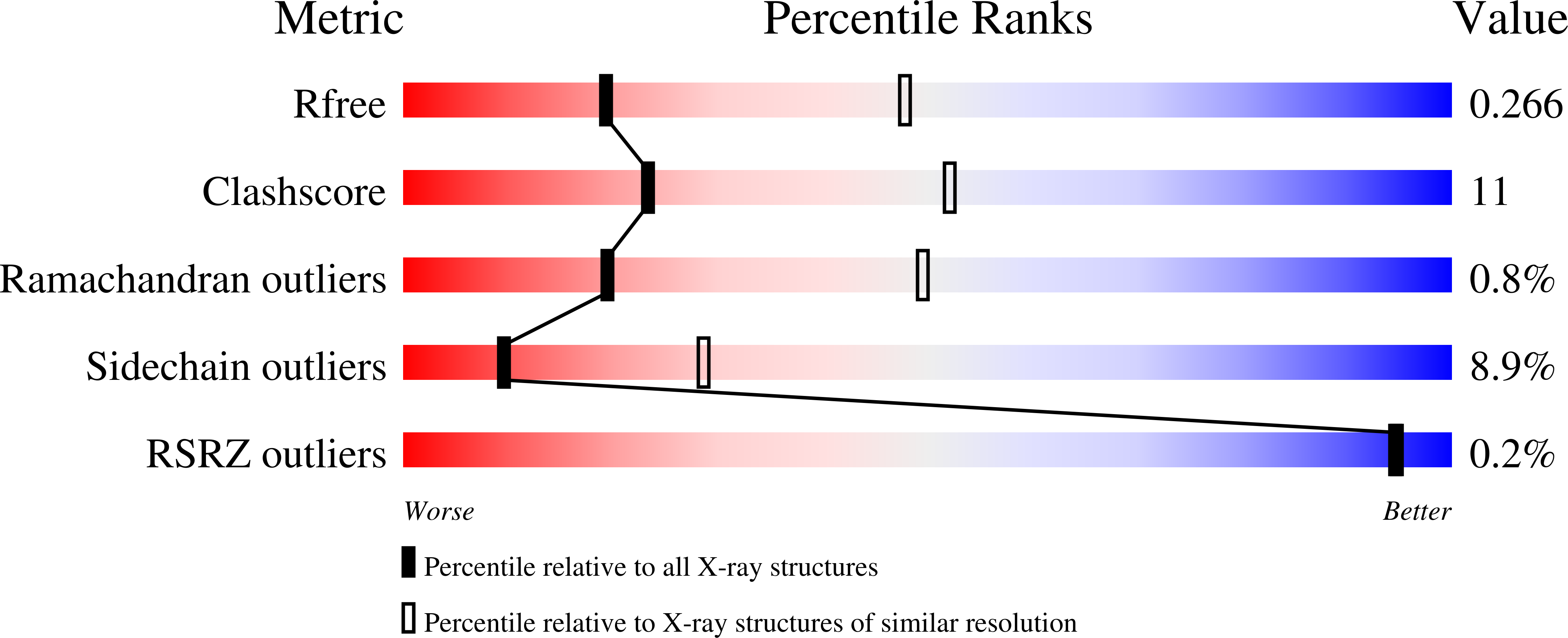Structure of the Streptococcus agalactiae family II inorganic pyrophosphatase at 2.80 A resolution
Rantanen, M.K., Lehtio, L., Rajagopal, L., Rubens, C.E., Goldman, A.(2007) Acta Crystallogr D Biol Crystallogr 63: 738-743
- PubMed: 17505113
- DOI: https://doi.org/10.1107/S0907444907019695
- Primary Citation of Related Structures:
2ENX - PubMed Abstract:
Streptococcus agalactiae, a prokaryote that causes infections in neonates and immunocompromised adults, has a serine/threonine protein kinase (STK) signalling cascade. The structure of one of the targets, a family II inorganic pyrophosphatase, has been solved by molecular replacement and refined at 2.80 A resolution to an R factor of 19.2% (R(free) = 26.7%). The two monomers in the asymmetric unit are related by a noncrystallographic twofold axis, but the biological dimer is formed by a crystallographic twofold. Each monomer contains the pyrophosphate analogue imidodiphosphate (PNP) and three metal ions per active site: two Mn(2+) ions in sites M1 and M2 and an Mg(2+) ion in site M3. The enzyme is in the closed conformation. Like other family II enzymes, the structure consists of two domains (residues 1-191 and 198-311), with the active site located between them. The conformation of Lys298 in the active site is different from those observed previously and it coordinates to the conserved DHH motif in a unique way. The structure suggests that Ser150, Ser194, Ser195 and Ser296 are the most likely targets for the Ser/Thr kinase and phosphatase because they are surface-accessible and either in the active site or in the hinge region between the two domains.
Organizational Affiliation:
Institute of Biotechnology, University of Helsinki, PO Box 65, Helsinki, FIN-00014, Finland.


















